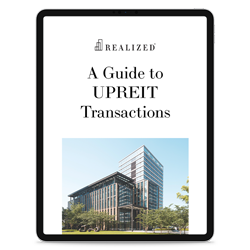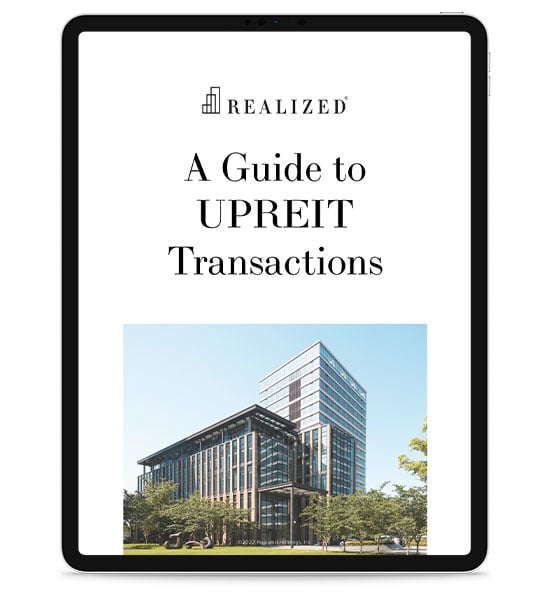
In previous blogs, we've touched on the idea of passive income for investors. One way to pursue passive income is the Real Estate Investment Trust or REIT. Unlike other investments that strive to provide passive income, such as the Delaware Statutory Trust, REITs are positioned as securities. In other words, investors put their capital (via sponsors/management firms) into real estate companies, potentially receiving income in return.
But how exactly does this happen? How do REITs make money, which is passed on to investors? This can happen in two ways: rental income and property appreciation.
What They Are
But first, let's offer a little more detail about the REIT structure.
REITs make money through rental income and property appreciation. Rental income is the most common source of revenue for REITs, and it comes from tenant rents. Property appreciation is the increase in the value of real estate over time, and it can also be a source of income for REITs if they sell properties for more than they paid for them.
Real Estate Investment Trusts came into existence in 1960. Legislation was introduced that offered real estate investment options to middle-class Americans. These days, a REIT is a company that buys, sells, manages, and finances real estate assets. The goal is to generate income for investors.
According to NAREIT, there are four different types of REITs:
- Equity REITs
- Mortgage REITs
- Public Non-Listed REITs
- Private REITs
The most common type of REIT is the equity REIT; this is generally traded on public stock exchanges, but any of the above allows investors access to portfolios. This is done by offering investors shares on public exchanges or privately through registered brokers or representatives. Once capital is pooled, it is invested in certain property types. The main benefit of REITs is that they give investors the opportunity to invest in commercial-grade real estate portfolios.
Whether they operate publicly or privately, REITs must adhere to certain rules:
- At least 75% of its total assets must be in real estate, cash, or US Treasuries
- At least 90% of taxable income needs to be paid to shareholders
- The REIT must have at least 100 shareholders after being in business for a year
- At least 75% of the REIT’s gross income must come from rent, mortgage interest, or real estate sales
This last point answers the question as to how REITs make money.
How They Earn
The REIT business model involves buying real estate, leasing space in those assets, and collecting tenant rents. These rents generate income, which is paid out to shareholders through dividends. This is the case for REITs that manage real estate assets.
The situation is different for mortgage REITs, also known as mREITs. These types of trusts don't directly own real estate. Rather, they purchase or originate mortgages and mortgage-backed securities; as such, mREIT income comes from interest payments on these investments.
Regardless of the type of REIT, successful management firms know how to build value (and, in turn, potentially increase investor returns) by building and buying cash-flowing assets. When the REIT sells these assets, its investors may also benefit from the sale proceeds.
Investing in REITs
Unlike other real property investments, publicly traded REITs can be easier for investors to access. This can be done either directly online or with the help of a stock or securities broker or agent. Privately traded REITs are generally exclusive to accredited investors and are only available through registered broker-dealers.
Regardless of what REIT you target, be sure that it fits your investment objectives and that you understand the risks of buying shares. While REITs offer a passive income opportunity, due diligence is still important.
A REIT is a security that sells like a stock on the major exchanges and invests in real estate directly, either through properties or mortgages. REITs receive special tax considerations and typically offer investors high yields, as well as a highly liquid method of investing in real estate. There are risks associated with these types of investments and include but are not limited to the following: Typically no secondary market exists for the security listed above. Potential difficulty discerning between routine interest payments and principal repayment. Redemption price of a REIT may be worth more or less than the original price paid. Value of the shares in the trust will fluctuate with the portfolio of underlying real estate. Involves risks such as refinancing in the real estate industry, interest rates, availability of mortgage funds, operating expenses, cost of insurance, lease terminations, potential economic and regulatory changes.
This is neither an offer to sell nor a solicitation or an offer to buy the securities described herein. The offering is made only by the Prospectus.
This material is for general information and educational purposes only. Information is based on data gathered from what we believe are reliable sources. It is not guaranteed as to accuracy, does not purport to be complete and is not intended to be used as a primary basis for investment decisions. It should also not be construed as advice, meeting the particular investment needs of any investor.
There is no guarantee that the investment objectives of any particular program will be achieved. The actual amount and timing of distributions paid by programs is not guaranteed and may vary. There is no guarantee that investors will receive distributions or a return of their capital. These programs can give no assurance that they will be able to pay or maintain distributions, or that distributions will increase over time.



